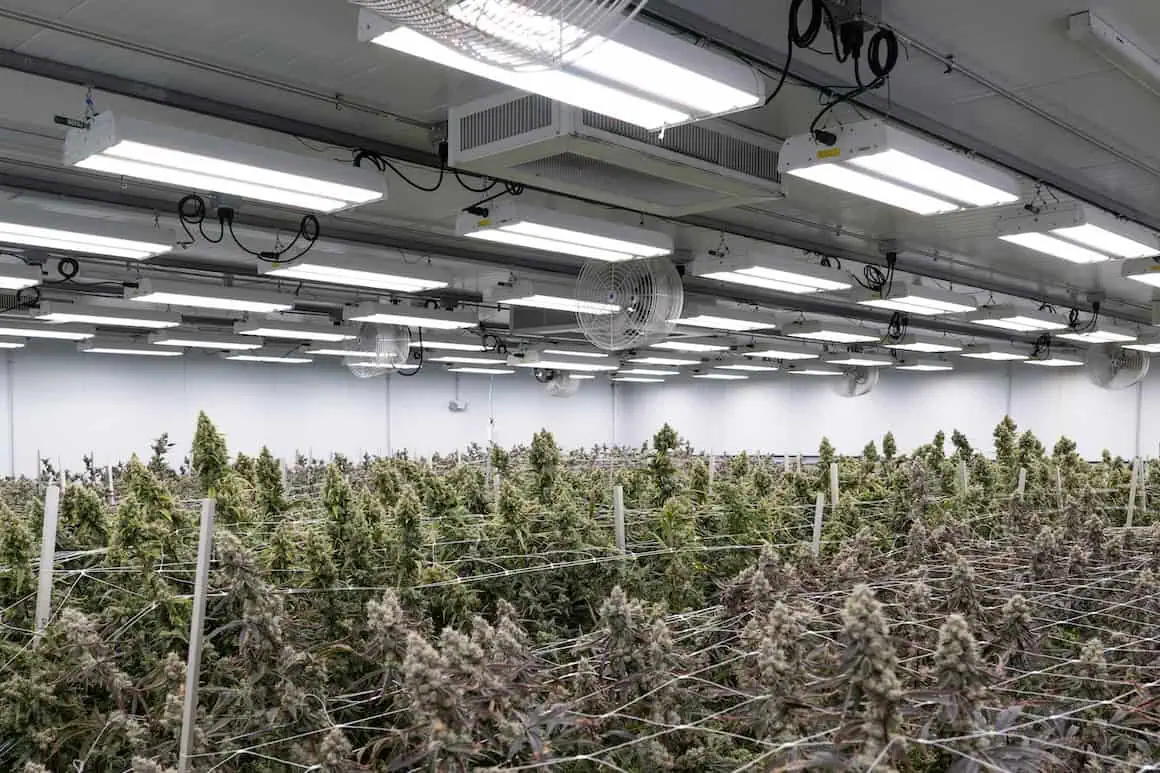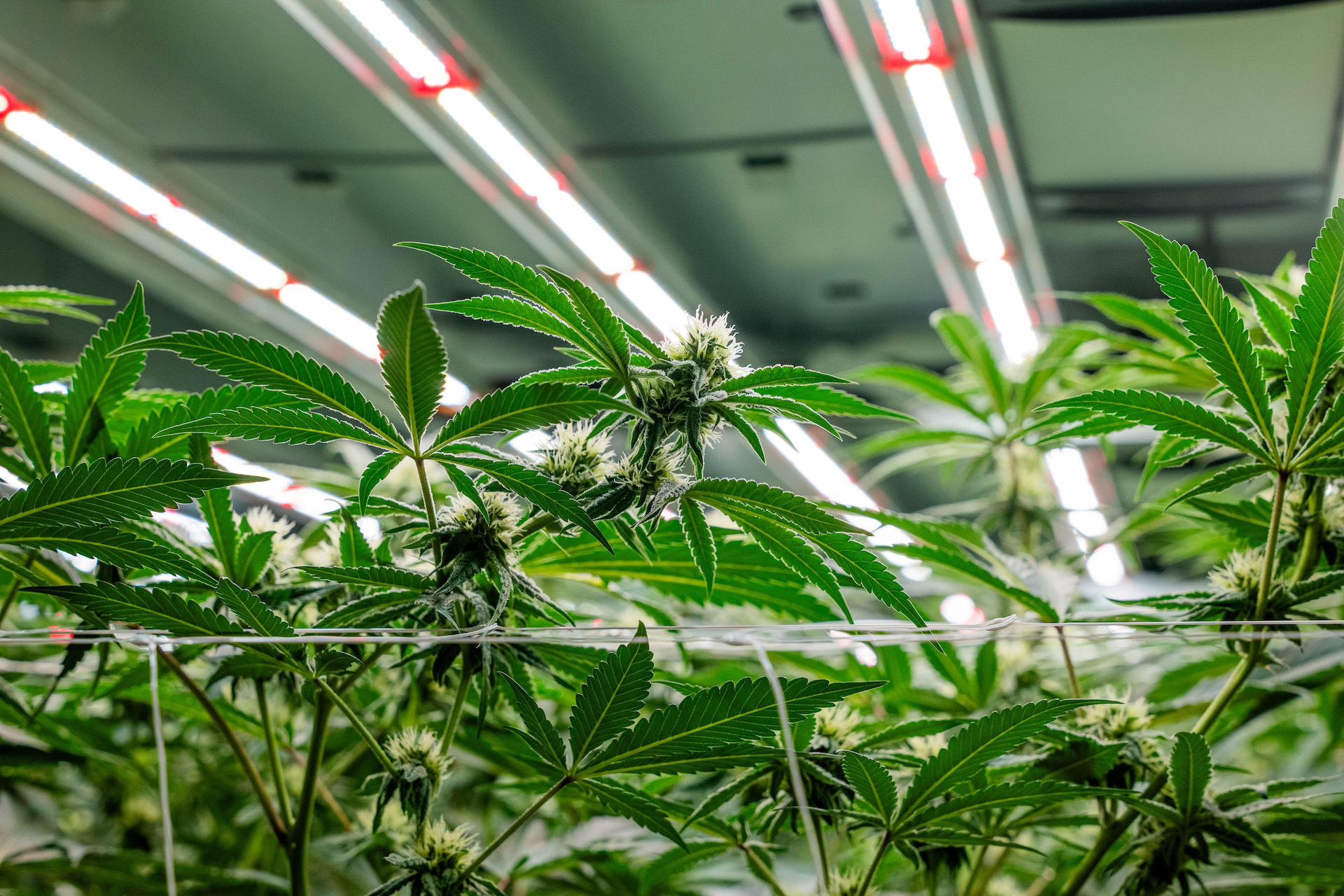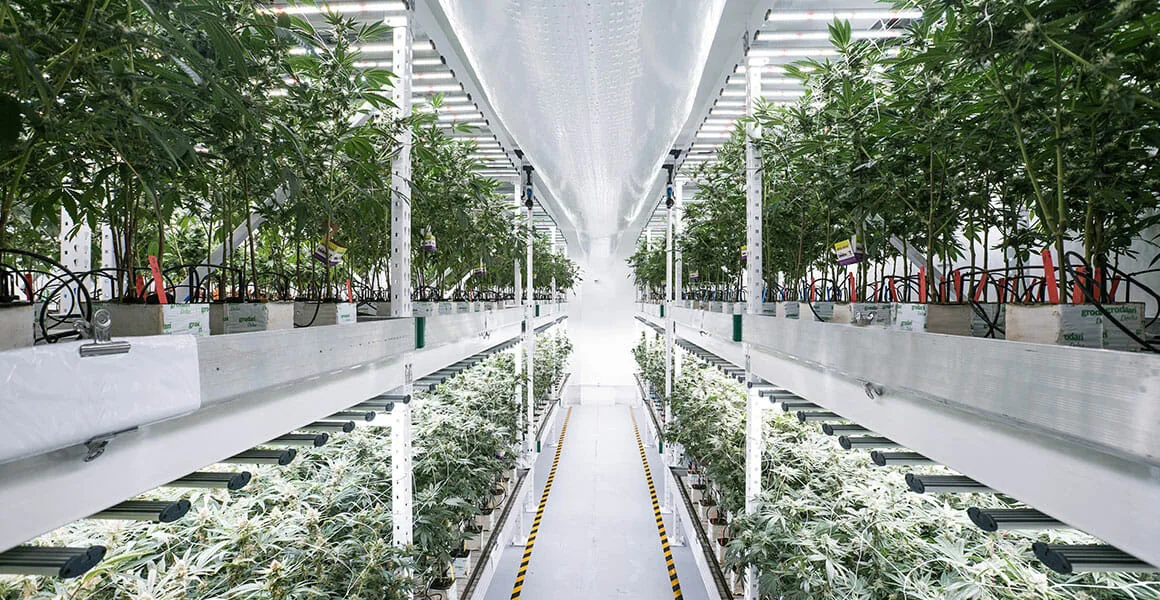Sweet Basil Downy Mildew Controlled by Fluence PrSpec™
- Posted on
- by Fluence Bioengineering
Table of Contents
Basil downy mildew. (Photo courtesy University of Florida.)
[dropcaps type=’normal’ font_size=’72’ color=’c44900′ background_color=” border_color=”]B[/dropcaps]asil Downy Mildew (BDM) caused by Peronospora belbahrii and other oomycetes prefer wet, humid conditions and require dark periods like some other DM causing organisms (Cohen et al., 2013). They infect plant leaves by developing germ tubes from spores (zoospores) though stomata and then the disease progresses. Sweet basil (SB) has a relatively higher stomatal density and downward leaf rolling compared to some other varieties, which are less susceptible for BDM. Higher stomata density on leaf lower surface and also due to downward leaf rolling, a relatively higher humidity may build-up near the lower surface causing mildew spores to germinate. Non-chemical control of BDM is very important for organic SB production. [button size=”medium” icon=”fa-arrow-circle-o-right” target=”_blank” hover_type=”default” text=”See related article” icon_color=”#c44800″ link=”/university-of-florida/” color=”#ffffff” background_color=”#364652″ hover_background_color=”#364652″ border_color=”#364652″ hover_border_color=”#364652″]The Fluence Phytochrome red spectrum (PrSpec™), which induced BDM suppression, was hypothesized to be operated via red light photoreceptors (Cohen et al., 2013). According to this, I hypothesize that through phytochrome signaling pathway, red light induces maintenance of the mediator proteins, which are useful to suppress BDM progression (Cerdan and Chory, 2003; Elfving et al., 2011; Caillaud et al., 2013). These mediator proteins have shown to regulate certain plant defense related gene expression in response to pathogens. I also hypothesize that in response to red light induced active gas exchange, the microenvironment around the leaf lower surface becomes less humid resulting in unfavorable conditions for P. belbahrii pathogenicity.Basil test samples under Fluence PrSpec™.
The degree of leaf rolling and the relative humidity of leaf micro-domains in red light-treated plants compared to the dark treated BDM infected plants may provide useful information to understand the effect of red light on humidity. The Q-BOX CO650 analyzer will be used to measure the relative humidity and stomatal conductance. It will also be used to determine the impact on photosynthesis on BDM infected leaves treated with red light. The expression of mediator proteins will be quantified using gene expression assays in red light treated and untreated plant with BDM.

